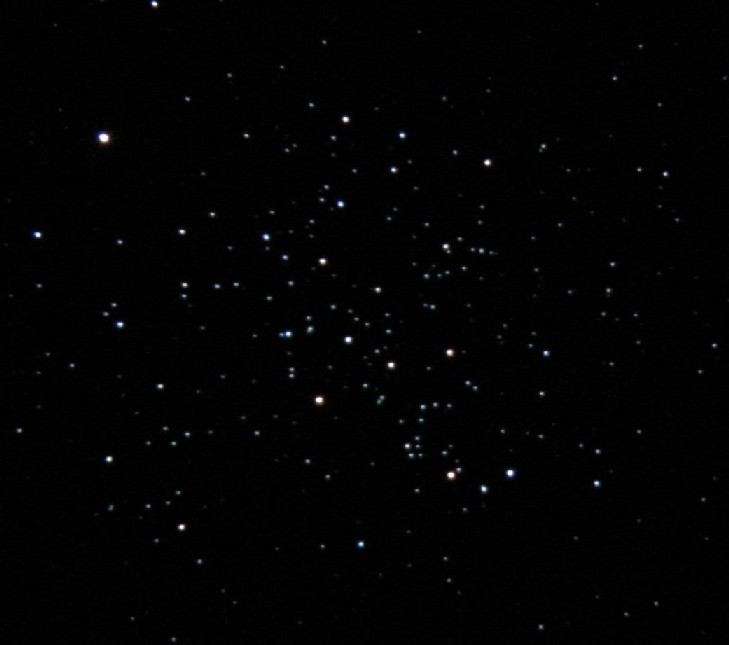
|
|
| M67 an Open Cluster - this image cropped and downsized from the original photo |
|
M67 is located about 10 degrees below
M44, the
beehive cluster. It's a loose bright patch of stars ranging over about a
half degree of the sky. It is fairly close to us, about 2700 light years
away. M67 is one of the oldest known open clusters, and by far the oldest of those that Charles Messier recorded in his famous catalog. The open clusters that we know of are generally aged in the 10's of millions of years old, and occasionally in the 100's of millions, but the stars in M67 are calculated to have been born at least 4 billion years ago. Usually the stars of a cluster are rapidly moving away from one another, and before long loose their identity as a cluster. Such is the case of the presumed cluster that our newborn sun was more than likely created with. It has been calculated that the stars of M67 will remain gravitationally associated with one another and can expect to exist as a cluster for about another 5 billion years. Only a few open clusters have been found to be older, among them NGC 6791, which is about 7 billion years old, currently the oldest known open cluster in our Milky Way galaxy. The total number of stars in M67 is about 500, of which as many as 200 are white dwarfs, which are the remnant, white hot, dead, slowly cooling cores of the larger sun-like stars that have come to the end of their lives and blown off their outer layers. Since the stars of M67 were born and are therefore about the same age as our sun, and many of its stars have a similar chemical composition as the Sun, this cluster is of particular interest for the study of solar-type stars. There are at least 100 sun-like stars in M67. |
|
10"
F6.3 Schmidt Cassegrain Telescope, (1600mm F.L.) Canon
300D camera at the scopes prime focus |